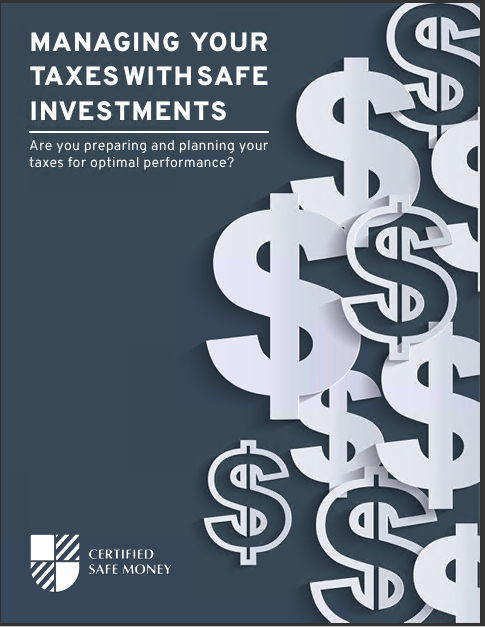Key Takeaways:
- Life insurance offers several tax advantages, including tax-free death benefits and potential tax-deferred growth.
- Understanding these benefits can help you maximize your financial planning and estate planning strategies.
Discover the Tax Advantages of Life Insurance Coverage
Life insurance is not only a vital tool for providing financial security to your loved ones but also offers significant tax advantages that can enhance your overall financial strategy. These benefits include tax-free death benefits, tax-deferred growth, and other potential tax savings. This article will explore the various tax advantages associated with life insurance policies and how you can utilize them to maximize your financial planning.
Tax-Free Death Benefits
One of the most well-known tax advantages of life insurance is the tax-free death benefit. When the policyholder passes away, the beneficiaries receive the death benefit without having to pay federal income taxes on the proceeds. This tax-free payout can provide significant financial relief to beneficiaries, allowing them to cover expenses such as funeral costs, outstanding debts, and living expenses without the burden of additional taxes.
Benefits to Beneficiaries
The tax-free nature of life insurance death benefits ensures that the full amount intended by the policyholder is available to the beneficiaries. This feature is particularly beneficial for providing immediate financial support during a difficult time.
Example: If a policyholder has a $500,000 life insurance policy, the beneficiaries will receive the full $500,000 without having to pay federal income taxes on the amount. This tax-free benefit can be a critical financial lifeline for families dealing with the loss of a loved one.
Tax-Deferred Growth
Another significant tax advantage of life insurance is the potential for tax-deferred growth. Permanent life insurance policies, such as whole life or universal life, include a cash value component that grows over time. The growth of this cash value is tax-deferred, meaning that policyholders do not pay taxes on the gains as long as they remain within the policy.
Benefits of Tax-Deferred Growth
Tax-deferred growth allows the cash value to compound over time without being reduced by taxes. This can result in substantial growth of the cash value, providing additional financial resources for the policyholder during their lifetime.
Example: A policyholder with a whole life insurance policy accumulates $100,000 in cash value over several years. The growth of this cash value is not subject to annual income taxes, allowing the full amount to continue compounding and growing tax-deferred.
Tax-Free Loans and Withdrawals
Policyholders with permanent life insurance policies can access the cash value through loans or withdrawals. Loans taken against the cash value are generally tax-free, as they are considered debts that must be repaid. Withdrawals up to the amount of the premiums paid into the policy are also typically tax-free.
Using Policy Loans
Policy loans can provide a source of tax-free income during retirement or in times of financial need. Since these loans do not require a credit check and offer competitive interest rates, they can be an attractive option for accessing funds.
Example: A policyholder with $50,000 in cash value may take a loan against the policy for $20,000. This loan is tax-free and can be used for any purpose, such as covering medical expenses or supplementing retirement income.
Tax-Free Withdrawals
Withdrawals from the cash value are typically tax-free up to the amount of premiums paid. This allows policyholders to access their money without incurring additional taxes, provided the withdrawals do not exceed the total premiums paid.
Example: If a policyholder has paid $30,000 in premiums and the cash value has grown to $50,000, they can withdraw up to $30,000 tax-free. Any amount withdrawn beyond the premiums paid would be subject to taxes on the gains.
Tax Advantages for Business Owners
Life insurance can also offer tax advantages for business owners, particularly in the context of business succession planning and key person insurance. Business owners can use life insurance policies to fund buy-sell agreements, provide key person insurance, and offer executive benefits.
Buy-Sell Agreements
A buy-sell agreement funded by life insurance ensures that the remaining business owners have the necessary funds to buy out the deceased owner’s share of the business. The death benefit provides the liquidity needed for the transaction, often in a tax-efficient manner.
Example: Three business partners each take out a life insurance policy on the others, with the death benefit set to cover the value of their shares. If one partner passes away, the death benefit provides the funds needed to buy out the deceased partner’s share, ensuring business continuity without requiring substantial cash reserves.
Key Person Insurance
Key person insurance provides a death benefit to the business if a key employee or owner passes away. This benefit can be used to cover the costs of finding and training a replacement, offset lost revenue, and maintain business operations.
Example: A small business purchases a key person insurance policy on its CEO. If the CEO unexpectedly passes away, the business receives a tax-free death benefit to help cover the costs associated with the loss and find a replacement.
Estate Planning Benefits
Life insurance can play a vital role in estate planning by providing liquidity to cover estate taxes, debts, and other expenses. By structuring life insurance policies properly, policyholders can ensure that their estates are managed efficiently and their heirs are not burdened with significant tax liabilities.
Using Life Insurance Trusts
An irrevocable life insurance trust (ILIT) can be used to remove the life insurance proceeds from the policyholder’s taxable estate. This strategy ensures that the death benefit is not subject to estate taxes, providing more financial resources for the beneficiaries.
Example: A policyholder establishes an ILIT and transfers ownership of a $1 million life insurance policy to the trust. Upon the policyholder’s death, the $1 million death benefit is paid to the trust and then distributed to the beneficiaries tax-free, without being included in the policyholder’s estate for tax purposes.
Paying Estate Taxes
Life insurance can provide the liquidity needed to pay estate taxes and other expenses, ensuring that the estate does not have to sell assets to cover these costs. This is particularly important for estates with illiquid assets, such as real estate or closely held businesses.
Example: A policyholder owns a large estate with significant real estate holdings. They purchase a life insurance policy to cover potential estate taxes, ensuring that their heirs do not have to sell the properties to pay the tax bill.
Leveraging the Tax Benefits of Life Insurance
Understanding the tax advantages of life insurance can significantly enhance your financial planning strategy. From tax-free death benefits to tax-deferred growth and the ability to take tax-free loans and withdrawals, life insurance offers numerous benefits that can provide financial security and flexibility. Additionally, for business owners and those engaged in estate planning, life insurance can offer valuable solutions to manage taxes and ensure the smooth transfer of assets.
By carefully selecting the right type of policy and understanding how to leverage these tax advantages, you can maximize the financial benefits for yourself and your beneficiaries. Consulting with a financial advisor or tax professional can help you navigate the complexities of life insurance and develop a strategy that aligns with your financial goals.
Contact Information:
Email: robertgay@credkeeper.com
Phone: 8777993433













